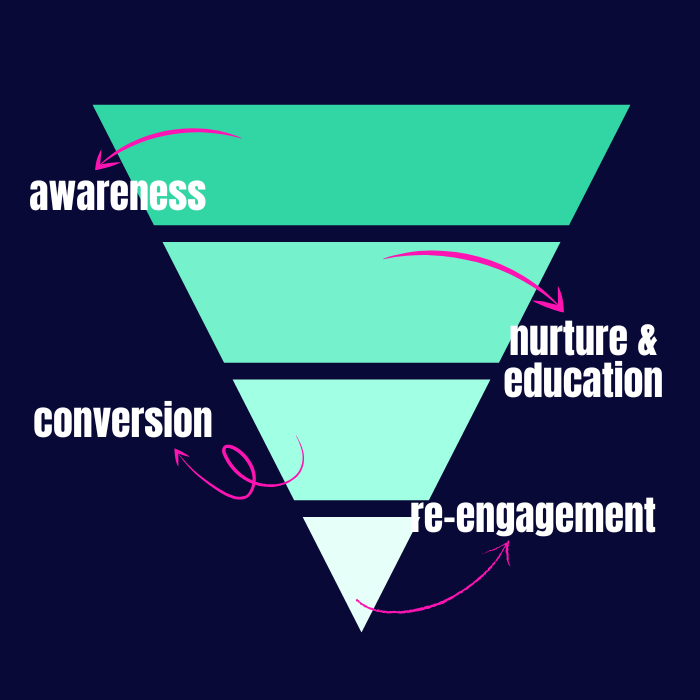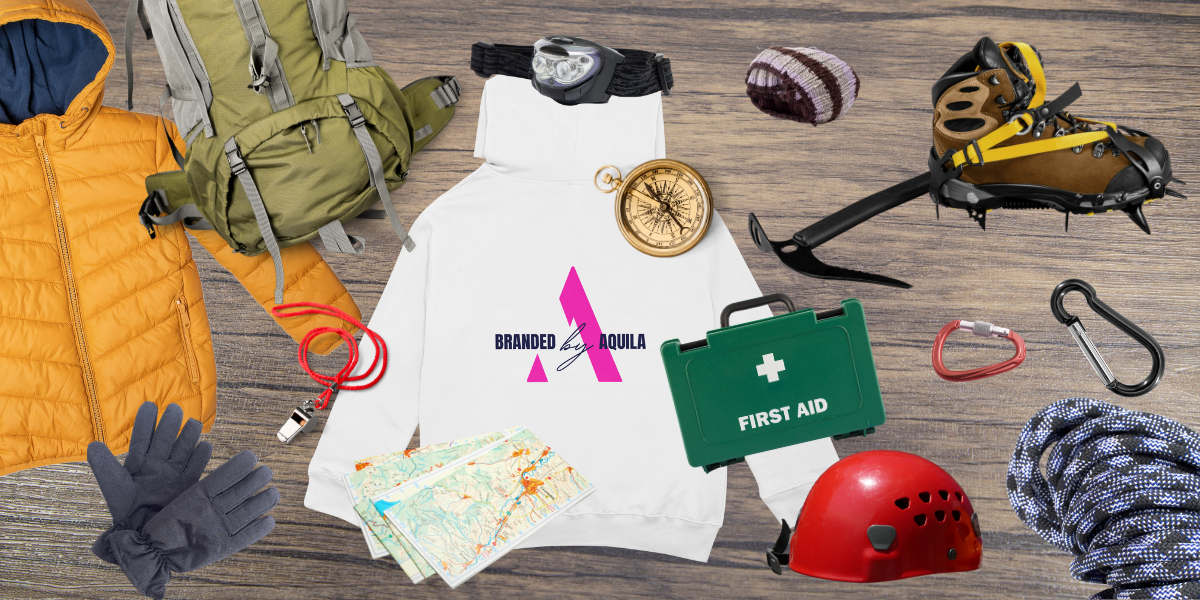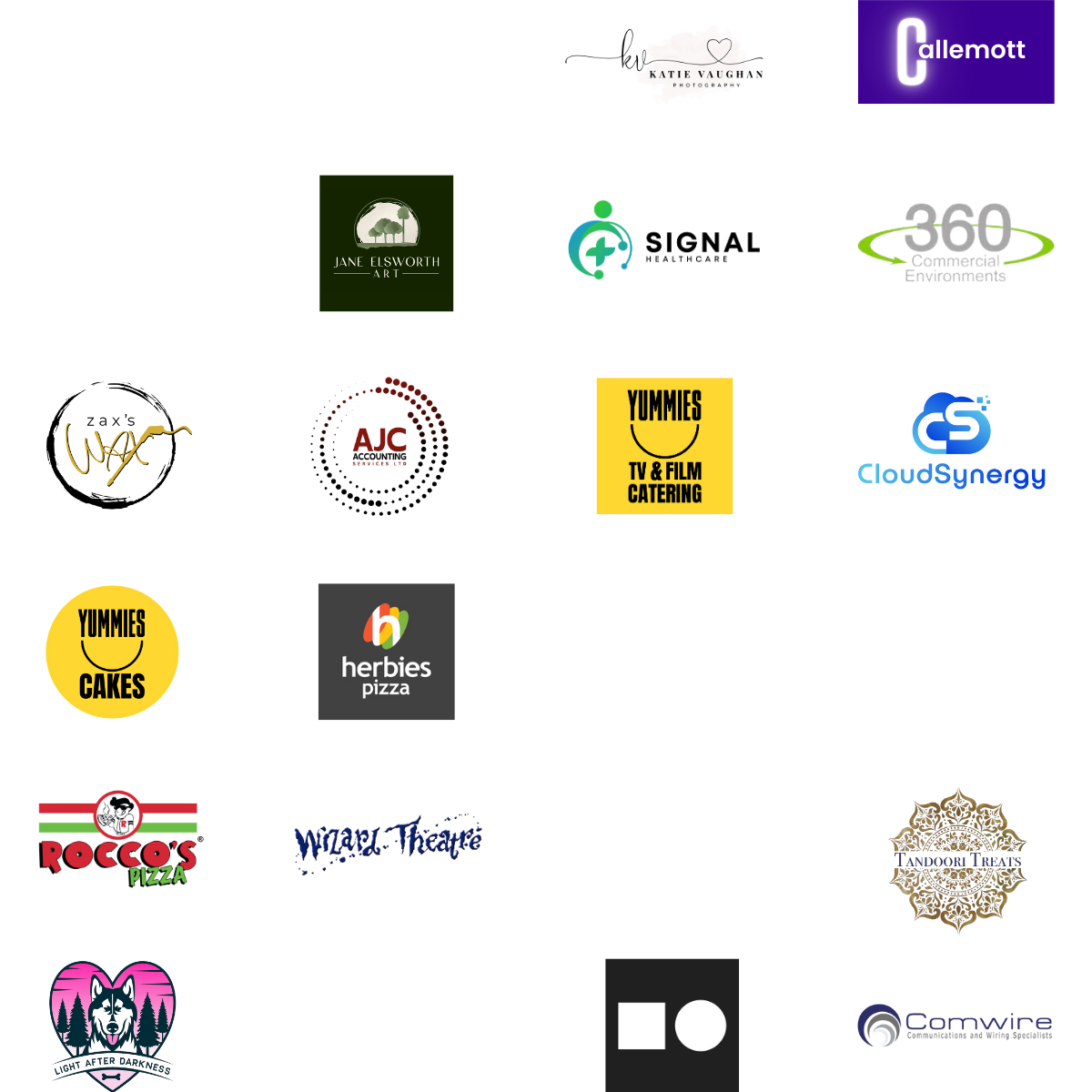If you think of marketing like a journey, it's no different to being prepared to scale a mountain. This means you need to have a plan and a solid strategy in place. Businesses normally fall into three different camps, depending on their size. No matter which camp your business falls into, we've got some advice to help you along.
Marketing is a continuous journey, and much like how you need to be prepared for a hike up Ben Nevis, you should get your essentials in place before you take the first step. Once the foundations are there, you can continuously build and scale up that mountainside to deliver impactful results. And as we look towards the future, hazy in snowfall, understanding where your business stands on this journey is key.
At the back end of 2024, and moving into the new year, we’ve had conversations with companies about what a marketing strategy in 2025 looks like for them. In most instances, businesses tend to fall into one of three camps, depending on their size.
Now, every camp will consist of businesses with varying focuses and considerations. This means that marketing strategy advice should be tailored to them, their needs and resources. However, before we get started with handing out ration bars in the form of advice, we should get the safety checks out of the way – how to make data-driven decisions through a marketing plan with a SAFe framework.
Implement The SAFe Framework for Your Marketing Strategy.
As with any project, there are certain realities that you need to consider to determine suitability, acceptability and feasibility within your business. These realities are no different when it comes to building a successful marketing plan.
How marketing teams assess and validate a marketing plan against their company’s objectives can vary, but at Branded by Aquila, we lean towards applying the SAFe framework to all completed marketing plans.
Suitability.
First of all, we need to determine that all proposed marketing activities within the marketing strategy directly address the company’s wider corporate objectives. Digging into the Earth isn’t a suitable strategy to help you on your journey up a mountain.
Acceptability.
Of the proposed marketing activities, how likely are they to be deemed acceptable by stakeholders? What will they think of the activity? Does this vary across stakeholder type? Everyone should be on the same page about your objective to reach the summit.
Feasibility.
Finally, all activities should be considered in line with the company’s capabilities, especially in terms of current resources and budget. Has everyone been able to secure enough funding, ensuring they have the right equipment for the hike ahead?
Each marketing strategy is scored against these criteria to determine its impact and how easy it would be to implement. By using this system, businesses can make more informed decisions, and individuals can feel more comfortable with accountability, knowing that there’s been some level of validation across the business. This also removes any ambiguity over the coming months as the plan in executed, such as “Is this activity appropriate?”, “How does it support the overall business objectives?” or “What additional resource is required to execute?”.
Why is this important? While you won’t necessarily have all the details to start with, you will have some realistic idea on factors, such as budget, tech stack and team contribution. It’s important to note that while marketing for business growth can be ambitious, it should still be realistic.
With all this in mind, let’s now look at the camps that businesses tend to fall into. Some are at the base, while others are already well on their journey up the mountainside.

Campsite A: Building Marketing Foundations.
On closer inspection, Campsite A seems to be comprised of two sub-sections with slightly different ideologies. One side doesn’t seem to have a clue about how to get up the mountain, but they know they need to start climbing as they can see others doing it. The other side is raring to go but seems to be slightly confused about how they’ll go about it.
Sub-Camp Alpha.
Companies in this sub-camp have no idea about marketing or what they think they need. All they know is that they want to invest in some level of marketing. They can see competitors standing out and are feeling a bit left behind when coming up against them. These companies might have also seen people on social media and recognise that they need to do something to be able to compete against them, and to survive on their ascent up Ben Nevis.
Sub-Camp Beta.
The other half of Campsite A consists of companies that have done some sort of SWOT analysis, internally identifying gaps or areas where they feel marketing could better support their billers in their role. However, they don’t necessarily know what that service or package looks like when approaching a marketing agency.
Our Pre-Climb Advice for Marketing Foundations.
Both sub-sets of campers need to have a conversation about their next 12 months. Marketing strategies for small businesses can all be very different. What are they trying to achieve during that time? Similarly, they should look at individual desk targets. A question we like to lead with is, ‘In 12 months’ time, what does marketing success look like to you?’.
From our perspective, there’s normally a thorough find out process at this point. An outsourced provider will go through some level of qualification to tease out what support they would need, and if it is feasible.
For everyone in Campsite A, this is an opportunity to be open about the types of opportunities available. Consider it an educational exercise to help understand what marketing looks like for your industry, and what tactics might be better for you based on your unique business objectives, team, processes and resource. You might not have even considered going up a different path than your neighbouring campers, or want to explore how using different tools (like a new CRM in the form of ice picks) will build on your marketing efforts up this mountain.
At the end of the day, you’re speaking to a specialist for a reason, so it’s important to listen to their insight rather than wanting to jump on the bandwagon of what everyone else is doing. Yes, we can all see that company is appearing on podcasts, but that doesn’t necessarily mean you need to do the same. Your path to success can be vastly different from others, so it should be reflected in your efforts in building a successful marketing plan.
When you’re ready to have your find out chat and campfire singalong with an outsourced marketing provider, reach out and be open to their suggestions.

Campsite B: Scaling Your Marketing Strategy.
Just ahead of Campsite A a little way up the mountain is a slightly larger group. These guys are really interesting because their existing level of marketing support can vary in depth and breadth, splitting them once more into two separate sub-camps. Compared to the previous camp, this lot has put some effort into marketing resources for growing businesses.
Sub-Camp Gamma.
These businesses have some foundations in place and are generating some form of ongoing marketing (either through an outsourced provider or through internal resource). They’ve appointed some resource to build out their brand and marketing function because they know it will help them up the mountainside.
Sub-Camp Delta.
Companies belonging to this sub-camp aren’t as prepared. They’ve fumbled some basic provisions together, doing the best they can for their marketing strategy without the need of a specific resource, and they’ve made it work for the meantime.
Those who have fumbled a solution together have noticed how it’s now positively impacting their sales team and the rest of senior management. However, it’s taking them way too long to equip everyone with the proper attire or it’s clear that they’re not experts (no one’s brought any carabiners, for example). Of course, they know putting effort into marketing resources for growing businesses is necessary, but are simply going through the motions. Some effort has gone into giving everyone a branded jacket, like their personalised LinkedIn banners, but they’re not approaching the whole task as a strategic tool.
It’s clear that the overwhelming majority of people in this camp aren’t clear on the aspects of marketing. When scaling your marketing efforts, having a content strategy, reviewing the metrics, A/B testing on posts, and weaving recruiters’ personal brands takes a considerable amount of time and resource. You can’t just rock up and expect to get the same results as everyone else.
Our Pre-Climb Advice for Scaling a Marketing Strategy.
Let’s convene around the camping stove so we can explain a few things. It’s key to start looking at objectives between a one to three-year scope. This allows you to consider how the organisation and divisions in it will grow as you climb up this mountainside. This will help you consider your tech stack, bespoke support to varied skilled teams, like grads and top-billers.
Look at your marketing plan like your map. Your tech stack can be like a compass, which you may even need to upgrade to a GPS in future. There’s so much happening within your organisations, but this marketing strategy ensures you have better buy-in and a greater awareness of what marketing is trying to achieve. You can maximise your efforts up Ben Nevis if everyone collaborates.
At this stage, marketing should be a fundamental pillar within the business. Everyone understands the value of it and should be eager to tap into new ways of building a competitive advantage. What have you got that will make your journey up this mountain easier than those in Campsite A back at base camp?
For the analysts amongst you, trying to predict the weather or looking for the fastest route, your agile marketing plan allows you to assess and analyse targets set against it. You can then scale faster because of your ability to test, measure and review.
Those branded binoculars will come in handy to help you capitalise on emerging trends and opportunities. It will give you a more agile marketing framework to help you become more reactive. There’s no harm in looking at what others are getting up to on their journeys up this mountain. Just make sure you stay true to yourself.
Now get those laces tied and make some progress. Ben Nevis isn’t going to conquer itself!

Campsite C: Refining Your Marketing Strategy for Better ROI and Differentiation.
The final camp is the largest of the three. Not necessarily in number of companies, but certainly in employees. Much of what’s true for Campsite B can still be applied to these campers; however, members of Campsite C have more nuanced hurdles to overcome, mostly due to their size. They are a lot further up this mountain than the previous two camps.
In terms of agility and testing within the marketing plan, larger businesses should have much more detailed maps up this mountain. They’ll be looking closely at the weather, terrain and altitude, and testing it against what they’ve set out to achieve in any given day. They will have a more agile marketing plan, likely more complexed and omni-channel, because they have the resource for it, at least compared to those in Campsite A.
What tends to happen as companies get to this size is that they want to do something to make them stand out. A few have even erected their own stands and tents here this far up the mountain already, running their own events and leveraging what partnerships they’ve got. They’ve invited some well-known guests or people who align with their wider goals.
Others are already working on their pre-climb messaging, inspiring others on the best ways to go forward with their marketing strategy. There are signs of industry leaders already – you could recognise their banners as you came overcame the hills from Campsite B.
The biggest takeaway from this campsite already is that these companies are looking for specialists that can support the execution of one key area, such as outsourcing automation projects.
Our Pre-Climb Advice for Refining Your Marketing Strategy.
With megaphone in hand, we hope these messages can clearly cut through all the noise. We know you’ve already gone through the SAFe framework checks and are aligning goals to the incredibly detailed marketing plan. What’s important is to focus on areas where you might be falling short or can capitalise on emerging opportunities. Staying extra vigilant to the market conditions is essential!
When marketing for business growth, make sure you’ve got everything ticked off that you can do well. You’ve got the branded gear, the detailed targets and all the technology you could ask for. Every extra step you take up this mountain will be measured against something on the marketing plan. Don’t be afraid to pivot if something isn’t quite working. If everyone is ignoring your PPC mules with their ads, get rid of them.
What opportunities have you identified? You might be eyeing up competitors already, seeing what they’re getting up to and wondering how successful that could be for you. Our biggest piece of advice is to stay relevant to your audience but provide them with value - this is something that should be reviewed frequently, ensuring you’re responding the customers’ changing needs.
Additional gains from different marketing strategies, such as podcasts, will take time to gain traction and show results. You can spend hours chatting the ears off a well-known traveller up this mountain, but nothing will come of this if you only do it once. Sure, they’ll tell other people about what you said, but consider the amount of exposure you need before people will recognise you enough to want to do business with you - the 7/11/4 rule will definitely be on your radar here.
Reaching the Summit—Or Is It Just the Start?
Of course, your marketing efforts are never truly over once you reach the peak. There will always be another mountain to climb, and they get bigger - yet vary in challenge - every year. What’s certain is that you’ll face new obstacles and have fresh objectives to conquer, so your marketing strategy will change. Crucially, you should keep pushing forward, no matter where your business falls on the marketing landscape.
For those in Campsite A, it’s all about building the right foundations and making informed decisions about how to scale. For those in Campsite B, scaling your marketing efforts is about refining your strategy, embracing agility, and turning your efforts into measurable success. And for those in Campsite C, the journey is about leveraging your resources to fine-tune your approach, making sure you’re agile enough to navigate the shifting terrain ahead.
Remember that every step you take is part of your marketing journey. Whether you’re testing new tactics with trekking poles, or adjusting your course with your climbing harness, the view from the top is always evolving, and so should your marketing strategy as you scale.
So, buckle up that rope, take that next step, and keep climbing—your marketing journey will always have a new peak to reach.
Book in a call with the mountaineering team at Branded by Aquila to see how they can help you brand, market and grow.







